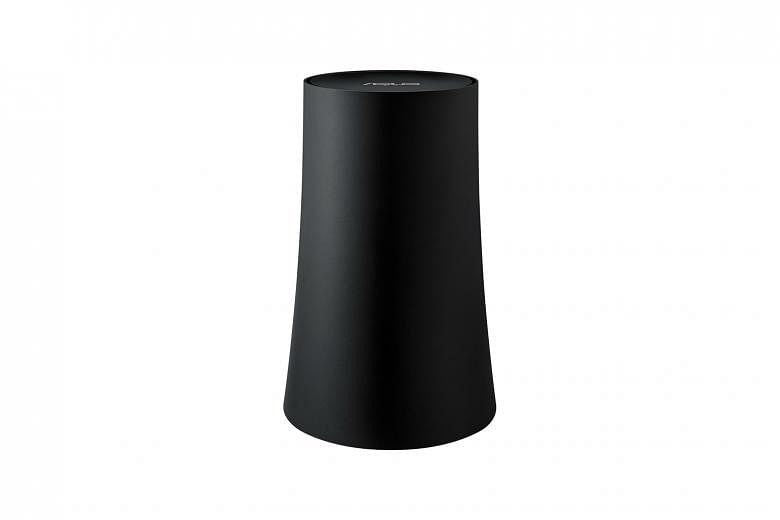The Asus OnHub router is a snap to set up and ideal for novices, but its lack of advanced features may frustrate power users.
This is the second member of Google's OnHub family of routers. Like the TP-Link OnHub, the Asus OnHub is a collaboration between a hardware vendor and Google, which provides the software.
Setting up the OnHub is an experience in itself. Unlike most routers which require a computer to configure their Web-based interfaces, the OnHub can only be set up using the Google On app (Android and iOS) on a mobile device.
-
TECH SPECS
-
PRICE: US$200 (S$280)
ETHERNET INTERFACE: 1 x 10/100/1000 Gigabit WAN, 1 x 10/100/1000 Gigabit LAN
STANDARDS: 802.11a/b/g/n/ac
SECURITY: WPA2
-
RATING
-
FEATURES: 3/5
DESIGN: 4/5
PERFORMANCE: 4/5
VALUE FOR MONEY: 2/5
OVERALL: 3/5
Unusually for a router, the Google On app requires a Google account. You can invite other Google users to edit your router settings using the app, like you would share a Google Drive document. However, only the owner is able to reset the router to its default factory setting.
The pairing process is pretty cool if you have an Android mobile device. The Google On app asks you to hold your mobile device over the OnHub. The router then sends a setup code, via an audio tone, to your mobile device to pair them together. Apple users, however, will have to manually enter the setup code (found at the bottom of the router).
The Google On app displays a map of your home network. At a glance, you can see the amount of bandwidth being consumed by each connected device in real time. The app also tallies up the data usage for the past hour, day or month.
The OnHub broadcasts its dual 2.4GHz and 5GHz wireless bands as a single network. Depending on your device, the router selects the appropriate wireless band. While this reduces confusion among users, tech-savvy users may be annoyed at the lack of control.
But the OnHub has a few more quirks that will drive geeks crazy.
For starters, this attractive-looking cylindrical device has only one Ethernet port. So if you have more than one wired device, you probably need to buy a network switch for the extra Ethernet ports. While minimising the port count - and thus curbing the potential cable clutter - helps reinforce Google's intent to make the OnHub sleek and living room-friendly, it also restricts the usefulness of the router.
Also, the OnHub's single USB port is solely for recovering from malfunctions. The port cannot be used to share files or printers over the home network via a connected hard drive or printer, unlike on other routers.
Other features that you would normally find on a modern router - parental controls or IPv6 support - are not available on the OnHub.
But it is possible that Google may enable these features via updates in the future. It recently introduced new features such as guest networks in this manner.
The company has also laid the groundwork to transform the OnHub into a smart home hub. The router has the hardware for Google's Weave and Bluetooth 4.1 standards for Internet of Things (IoT) devices. But they are dormant and Google has not indicated when these IoT features will be available.
Hence, the OnHub feels like one of Google's beta software projects. To be fair, it is functional as a router, albeit lacking in advanced features. For mainstream users, the OnHub is probably good enough, especially with its ease of use.
In my testing, the OnHub clocked an average download speed of 504Mbps. High-end routers can hit over 600Mbps, but the OnHub has decent speed for its price.
Although Asus lists the OnHub on its local Web page, it is not yet available for sale in Singapore.
• With its lack of features, the OnHub is not ready for power users, though this may change in the future. Mainstream users will like its ease of use.


